Zebra Muscles and Goby Fish
“The Great Lakes is one of the most invaded aquatic ecosystems in the world.”—Derek P. Crane and Donald W. Einhouse in the Journal of Great Lake Research
Part one of this series explained how the arrival of two particular invasive species, sea lampreys, and alewives, coincided with and contributed to the collapse of native Great Lakes fisheries. Part two explained how the intentional stocking of other non-native species, Pacific salmon, decimated and continued to help control the alewives, and how those fish essentially created the fishing culture and infrastructure we all know and love today.
This final chapter will discuss invasive species that have arrived more recently and explain how the ecosystems continue to adapt.
The Huge Power of Small Mussels
In 1988, a young biologist named Sonya Santavy pulled up a tiny shell while sampling for worms in the substrate of Lake St. Clair. Barely larger than a fingernail, that shell contained a living organism that would set off unimaginable changes across the Great Lakes and cause billions of dollars in damage.
Zebra mussels were already a well-known pest across the Atlantic. Native to the Caspian and Black Seas, the tiny mollusks had already colonized most of Western Europe through interconnected canals and waterways. Starting in the late 1700s, they spread to Hungary, London, Rotterdam, Hamburg, Copenhagen, Switzerland, Finland, Ireland, and Italy. Their eventual arrival in the Great Lakes, as captives in the discharged ballast water of a global commercial shipping fleet, feels inevitable in hindsight. All the warning signs were there, and yet ballast water discharges remain largely unregulated.
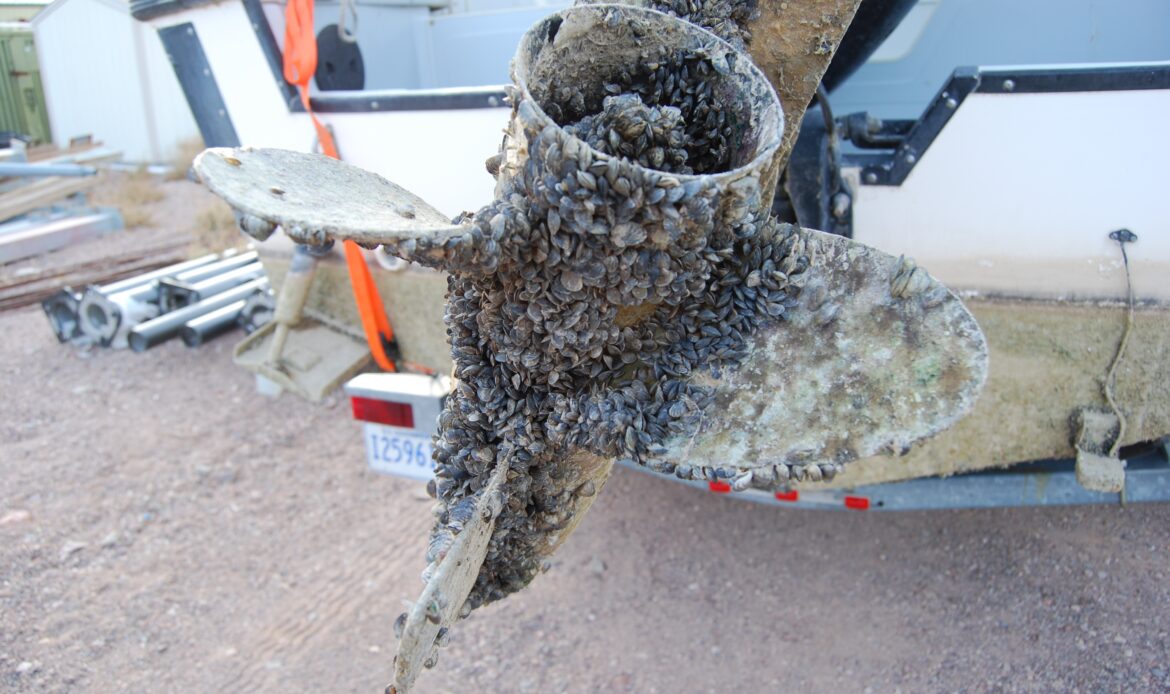
From that one individual identified in 1988, zebra mussels proliferated with incredible speed. According to the Ohio DNR, “Zebra mussels (Dreissena polymorpha) were almost unheard of by Lake Erie shoreline residents until 1989. By the autumn of 1989 zebra mussels had colonized the surfaces of nearly every firm object in Lake Erie.”
Later that same year, the first quagga mussels were identified in Lake Erie.
While zebra mussels get most of the attention, their cousins of similar origin are an even bigger problem. Though zebra mussels were the first invasive mollusks to trigger alarm, quaggas have steadily replaced them over the past few decades. The two get lumped together because they look nearly identical—only an expert can tell them apart—but while zebra mussels only live in relatively shallow water and require a hard surface on which to grow, quagga can mussels thrive virtually everywhere. Additionally, zebras go dormant through the cold months but quaggas feed year-round, causing massive changes to the lakes.
Zebra and quagga mussels are filter feeders that strain nutrients and plankton from the water. Each adult mussel can filter approximately one liter of water per day, and when you start multiplying that by billions of mussels (quagga mussels have been found at densities of nearly 8,000 individuals per meter), they’re filtering all the water in Lake Erie every few days. Practically, that means there’s less to eat at the bottom of the food chain. Lower densities of plankton mean fewer micro-organisms, which feed little fish. Fewer little fish means less food for big fish…you get the idea.
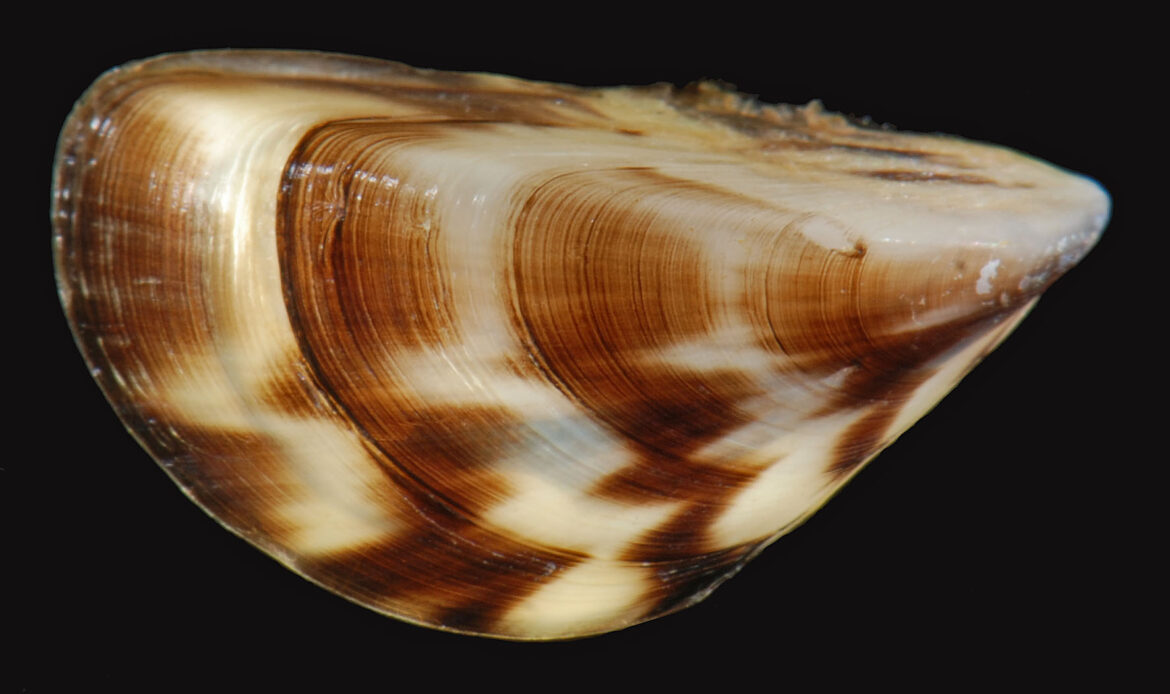
These tiny mussels were the first to cause managers to sound the alarm about new waves of invasive species entering Erie and the other Great Lakes through ballast water, but they were not the last.
Goby Snacks
There are more than 2,000 different species in the Gobiidae family of fishes. They live all over the world in tropical, temperate, marine, brackish, and freshwater environments. One species in Hawaii can climb 300 foot waterfalls. They’re a predominant food source for popular Atlantic species like cod, haddock, and flatfish. Gobies even inspired the popular children’s book, The Pout Pout Fish. In short, gobies are everywhere, but until very recently they weren’t in the Great Lakes.
The first round goby was found in the St. Clair River in 1990, when a little Canadian girl caught a fish that neither she nor her father, had ever seen before. The father got in touch with David Jude, a research scientist at the University of Michigan School of Environment and Sustainability. Jude took a ferry over to Ontario where the strange-looking fish was being held in a goldfish bowl. He identified it as a round goby.
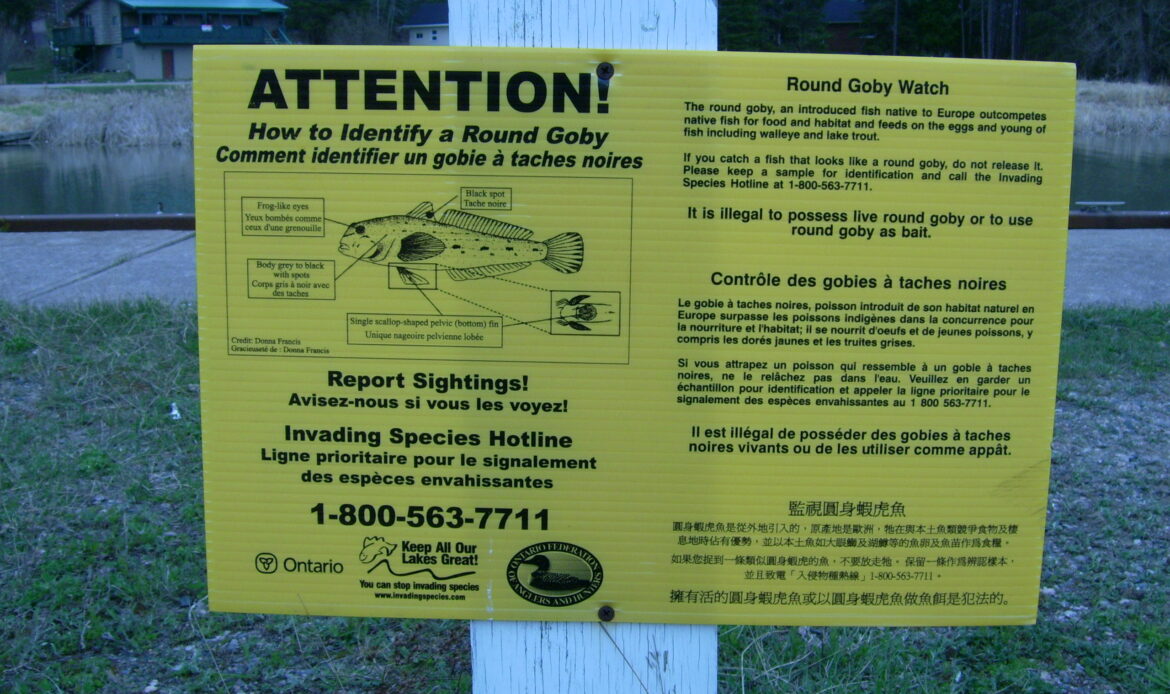
According to Great Lakes Now, “Round goby were known to be very aggressive and had successfully expanded their range when accidentally introduced into river systems in Europe.”
Jude told a reporter, “We were very concerned about it expanding its range into the Great Lakes.”
His concern turned out to be warranted. Within five years, round gobies spread to every single Great Lake. Round gobies reproduce quickly and are extremely aggressive for their size, ranging from 4-10 inches in length. They outcompete the native fish that occupy a similar place in the ecosystem—like sculpin and logperch—consuming most of the forage and taking over shelter and nesting sites. They also damage sportfish populations by raiding spawning nests and preying on larvae and fry.
By the late ‘90s, gobies were everywhere, causing serious anxiety for anglers, biologists, and fisheries managers.
Great Lakes author, journalist, and freshwater ecosystems advocate Kathy Johnson wrote: “I remember diving off the St. Clair boardwalk in the late 1990s and feeling completely hopeless. The river bottom was a solid blanket of zebra mussels over which schools of round goby swam and nothing else. I feared the entire river would eventually reach a similar lack of diversity. For a good 10 years, we watched them spread unchecked.”
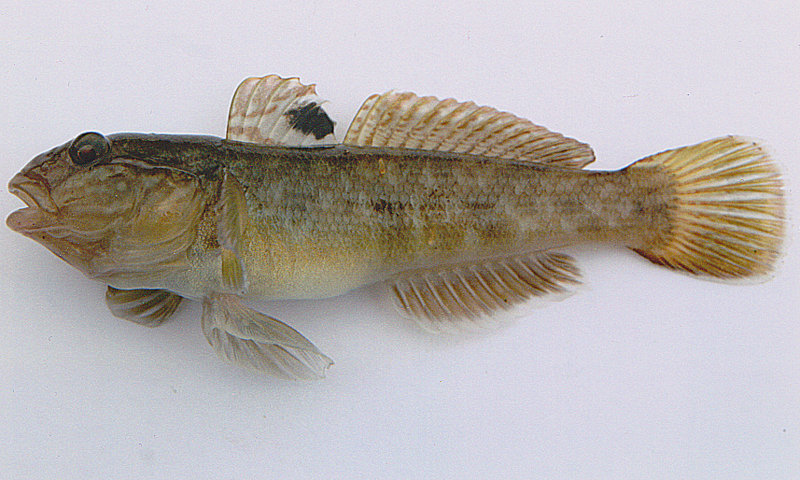
This marked a low point. Mussels and gobies had appeared and taken over so fast that no one quite knew what to make of the situation. Their ascension was so rapid that none of the native species had yet figured out what to do with these invaders. Nothing ate them because none of the existing fish or birds had ever seen them before.
Johnson wrote, “Thankfully, my worst fears and the direst of expert predictions were not realized. The round goby and zebra mussel introductions changed the Great Lakes forever; both are here to stay. But 30 years later, the Great Lakes are coping far better than most expected.”
So, What Now?
We still don’t know how the introductions of mussels and gobies will play out in the Great Lakes ecosystems, but don’t bet against these lakes; they’ve survived a lot from us in the past couple hundred years.
Chris Vandergoot, associate professor of fisheries biology at Michigan State University, knows the Great Lakes intimately and has seen the resiliency firsthand.
“Whenever we get an invasive species—first it was the zebra mussels, and then it was the round gobies—people say they’re going to collapse,” he said. “Nope. They’ve adapted. They’re so resilient. It is amazing.”
The zebra and quagga mussels were essentially nutrient black holes for their first 20 years here. They removed huge quantities of nutrients from the water, but none of those nutrients moved up the chain because nothing ate the mussels. Now, they’re on the menu and part of the food web. Freshwater drum, channel catfish, common carp, and crayfish have all adapted to start eating the new mollusks. Every summer, blue crabs migrate up the Hudson River to feast on this new food source, consuming 99% of the invaders. Even lake sturgeon, a native species listed as threatened in the Great Lakes, has discovered and started to take advantage of the new food source.
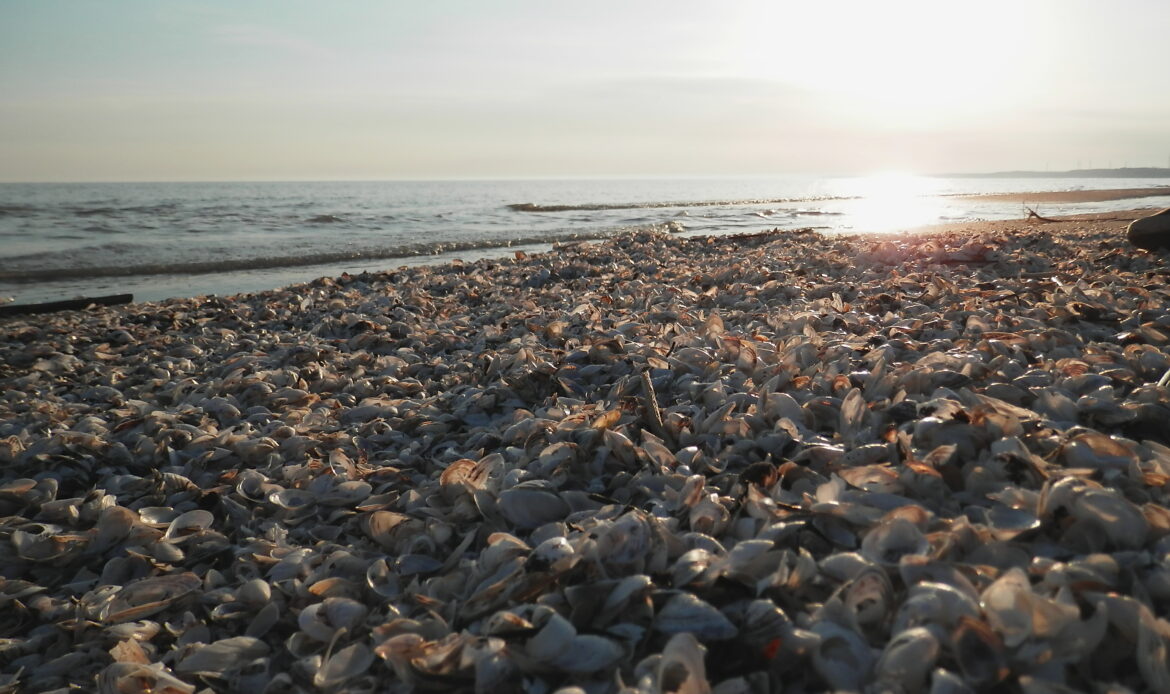
None of the predations is significant enough to counter the immense spread of the mussels; there are simply too many of them, and they reproduce too quickly. They are, however, now becoming part of a functional ecosystem. Perhaps ironically, the mollusks’ most significant predator is the round goby. Gobies didn’t have to adapt to eating zebra or quagga mussels because they all come from the same place. Gobies have been eating these mussels for millennia.
“When the round gobies arrived, lunch was already waiting for them,” Linda Campbell, an associate biology professor at Queens University, told the Chicago News Cooperative.
Gobies eat the mussels, and many native fish—including some of our favorite sportfish—are getting fat and happy-eating gobies.
Vandergoot explained it this way: “When we started catching gobies, they were huge. They were all five, six, and seven inches long. They looked like freaking hotdogs. Now you can’t find one bigger than your pinky, because things learn to eat them. Now that predation keeps them cropped down. Everything eats the bloody things.”
Yellow perch, rock bass, walleye, and brown trout are all known goby-eaters. Burbot, once reviled and somewhat creepy-looking, are currently enjoying a surge in popularity in the angling community. This ancient freshwater cousin of the cod has heavily integrated gobies into their diet.
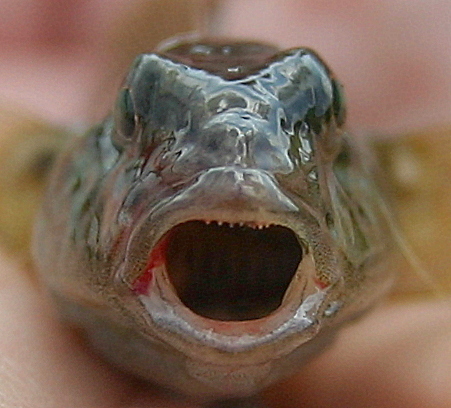
But nothing has adapted to gobies like smallmouth bass. Research shows that nearly 75% of their diet consists of little fish and that their growth rates have increased by as much as 15% since they switched from crayfish to gobies. Anglers on Erie figured this out long ago and gobies, both live and artificial, are the go-to bait in just about every bass boat.
Invasive species are never a good thing. We don’t want alien invaders in our waterways and should do everything we can to limit their spread. The Great Lakes—Erie included—are nothing like they were before humans started altering them. We have changed just about everything about these waterways, other than removing the water itself. We’ve fished them out, heavily contaminated them, and changed their flows. We’ve completely altered the rivers and wetlands that feed them and dredged shipping channels. We’ve introduced dozens of new species, both accidentally and intentionally, and sometimes even brought in new invasive species to help get rid of other invasive species. These lakes will never return to their pre-human states, but they will find ways to balance themselves if we give them the space and capacity to do so.
Perhaps most important (at least if you’re into fishing) is how profoundly prolific these lakes are, especially Lake Erie. Whether it’s walleye rebounding from systemic collapse to achieve historic high numbers, or smallmouth bass adapting to invasive food sources and growing to incredible sizes, this lake is a fish factory. We just need to stop messing it up.



